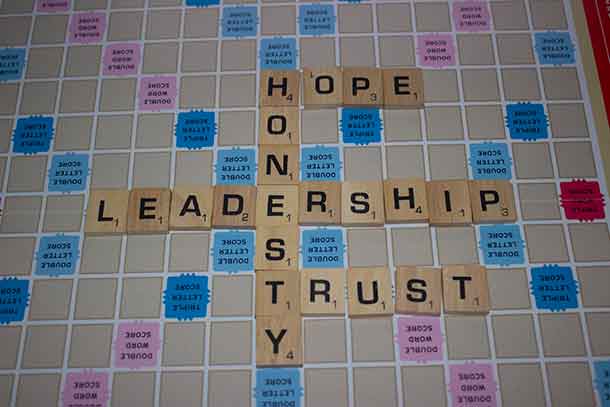
THUNDER BAY – The quality of the neighborhood where a child grows up has a significant impact on the number of problem behaviors they display during elementary and teenage years, a study led by Johns Hopkins Bloomberg School of Public Health researchers suggests.
In Thunder Bay, a look at the Crime Map offers an insight into how different neighbourhoods and crime are impacting our city. Limbrick, Academy, and the Windsor Housing Complexes run by the Thunder Bay District Social Services Administration Board are often the places in the residential parts of Thunder Bay with the greatest number of incidents that police are called out for responses.
The long-term impact on children living in areas where there are higher crime rates and less safety are now being looked at by researchers. While Thunder Bay is not a part of this study, the similarities that are happening in our community, with addiction issues, gang activities, and crime mean studying what the experts are uncovering is really important in order to find real solutions to the problems facing our community.
There are many studies ongoing, and there are many solutions being attempted. Having greater awareness and knowledge will help assure the decision making process works in a good way.
The John Hopkins Bloomberg study findings indicate that neighborhood quality has significant and long-term effects on child and adolescent problem behaviors, findings that can help inform national, state, and local housing policy and community investment decisions.
Using survey data collected between 1997 and 2007 on 3,563 children, the researchers found that children seven- to 12-years- old had significantly more serious behavior problems if they lived in neighborhoods that their parent-rated as “poor” for raising children, compared to those living in the “excellent” neighborhoods. For the study, parents rated their neighborhoods as either ‘excellent,’ ‘very good,’ ‘good,’ ‘fair,’ or ‘poor’ for raising children, with 20 being the highest score, for excellent, and zero, for poor. Externalizing problem behavior scores were 1.7 points lower for those in ‘excellent’ neighborhoods; the average problem behavior score was 4, with possible values ranging from 0-20.
Past studies have shown that externalizing behaviors—or problem behaviors that are directed toward the external environment, such as fighting, stealing, destroying property, or refusing to follow rules—affect 6 to 7 percent of children in industrialized western societies, a rate that increases with age. Many children with these problems continue to be disruptive and exhibit problems into adolescence.
Over the decade of follow-up for the study, parents completed questionnaires about their child’s behavior. Youth living in neighborhoods rated “excellent” had additional decreases in externalizing behaviors compared to those living in “poor” quality neighborhoods. The lower levels of behavior problems among adolescents in better neighborhoods were primarily explained by lower levels of parental distress and family conflict. Parents’ ratings of neighborhood quality were not associated with externalizing behaviors among children six-years-old and younger.
These behaviors predict more serious adverse outcomes later in life, such as substance abuse, delinquency, and violence, explains study leader Anne Riley, PhD, professor in the Department of Population, Family, and Reproductive Health at the Johns Hopkins Bloomberg School of Health. Previous studies have linked poor neighborhood quality to a higher risk of these behaviors, she adds. However, the timing of these neighborhood effects and how neighborhoods affect children’s behavior through their effect on parents’ stress and family conflict has not been previously shown.
To develop a better understanding of neighborhood effects on externalizing behaviors, the researchers used data from the Panel Study of Income Dynamics, a longitudinal study that has surveyed thousands of families over multiple generations since 1968 about the economic, social, and health factors that affect them. As part of this survey, primary caregivers of children aged three years and older completed a 10-item Behavioral Problem Index (such as whether the child was “disobedient” or “mean to others”) was “often,” “sometimes” or “not” true.
Neighborhood quality was also rated by independent observers based on five conditions, including deterioration of housing units, neglect of the street, garbage on the street or sidewalk, signs of drug use on the street, and noise outside the home. Their rating scores were essentially the same as those of parents.
Additionally, the survey assessed family resources, including income and education, and other measures that impact children’s psychological functioning and behavior, such as parental distress, family conflict, non-corporal discipline, parental monitoring, and deviant peer affiliation.
Riley notes that the connection between neighborhood effects and a child’s age might be simply a function of time—the longer a child is exposed to their environment, the stronger that environment’s influence is likely to be. Additionally, having better family conditions might buffer the effects of a poor quality neighborhood, or strengthen the effects of a good neighborhood.
A striking result of the study, she adds, is that most caregivers were well aware that they lived in a neighborhood that wasn’t the best environment for raising children. Other research has shown that many are unable to leave due to circumstances such as the cost of quality housing, proximity to jobs, or, for minority families, the difficulty of living in unfamiliar communities. As income inequality has grown over the past several decades, Riley explains, many parents are forced to raise their children in places that feel chaotic or unsafe, circumstances that are far from ideal for development. Future studies will be necessary to assess whether housing programs currently in place mitigate these factors and lead to fewer externalizing behaviors in at-risk children.
“I think this is a wakeup call for understanding the power of neighborhoods to contribute to the crime and behavior problems that we see in our society,” she says. “Our results suggest that neighborhood effects are something that we need to tune into in a much more explicit and purposeful way.”
“Perceived Neighborhood Quality, Family Processes, and Trajectories of Child and Adolescent Externalizing Behaviors in the United States” was written by Mengying Li, PhD, Sara B. Johnson, Ph.D., Rashelle Musci, PhD, Anne W. Riley, PhD.







